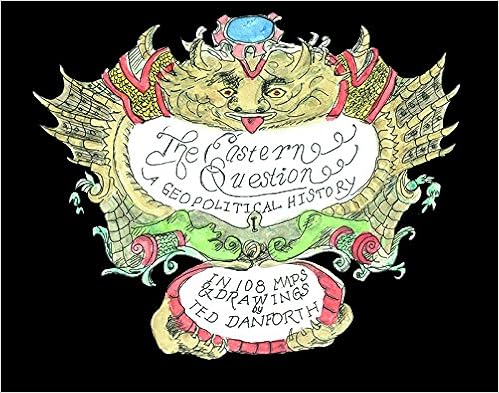The Eastern Question

In the weeks after 9/11, self-described “scholar-printer” Ted Danforth struggled to understand why the attacks occurred. He found his first clue in Osama bin Laden’s statement that the attacks were revenge for the Ottoman Empire’s dismemberment after World War I and Islam’s subsequent humiliation at the hands of the West. That statement led Danforth to look at 9/11 as a “continuation of patterns woven into the warp of historical time” rather than as an individual event. In The Eastern Question: A Geopolitical History in 108 Maps and Drawings, Danforth traces those patterns from ancient Mesopotamia to the modern day.
The format of the book is deceptively simple: a brief essay opposite a map or illustration drawn in a naive style reminiscent of the maps in fantasy novels. In fact, Danforth’s work is neither simple nor naive. In his pursuit of answers to “the eastern question,”* he considers topics as diverse as ancient and modern geopolitical theories, the inherent conflict between nomadic and settled peoples, the differing uses of time and space in churches and mosques, and the nature of empires. There are some errors of fact in the text, but the illustrations are consistently illuminating, whether Danforth is demonstrating the parallel development of Russia and the United States in the nineteenth century or the historical influence of Greek language and literature.
What begins as a history of fourteen hundred years of conflict between Islam and the West broadens into a charming and ambitious history of the world.
*A term initially used by European diplomats, journalists, etc to describe Europe’s relationship with the Ottoman empire in the 18th and 19th centuries.
This review previously appeared (sans asterisk) in Shelf Awareness for Readers




